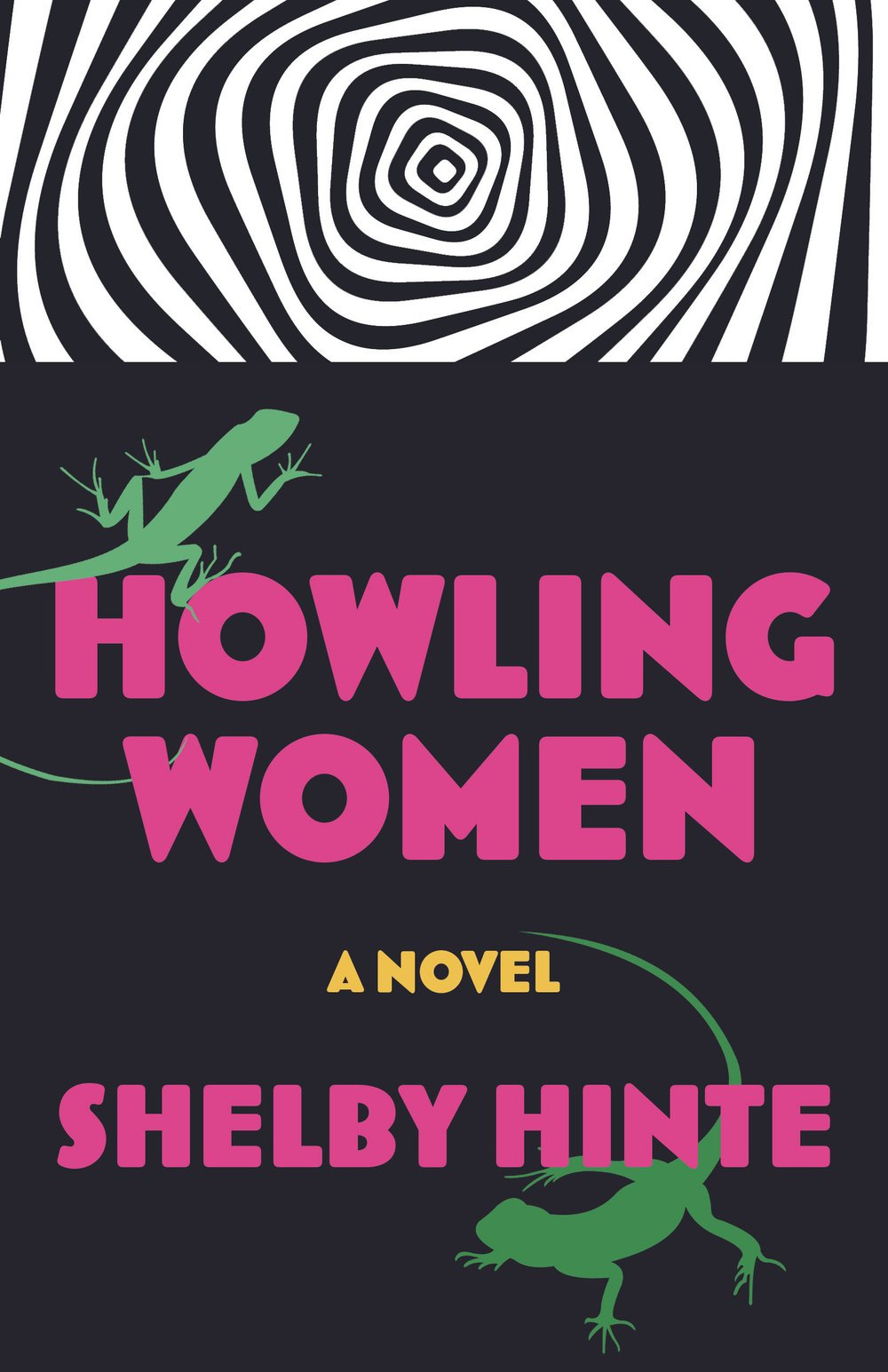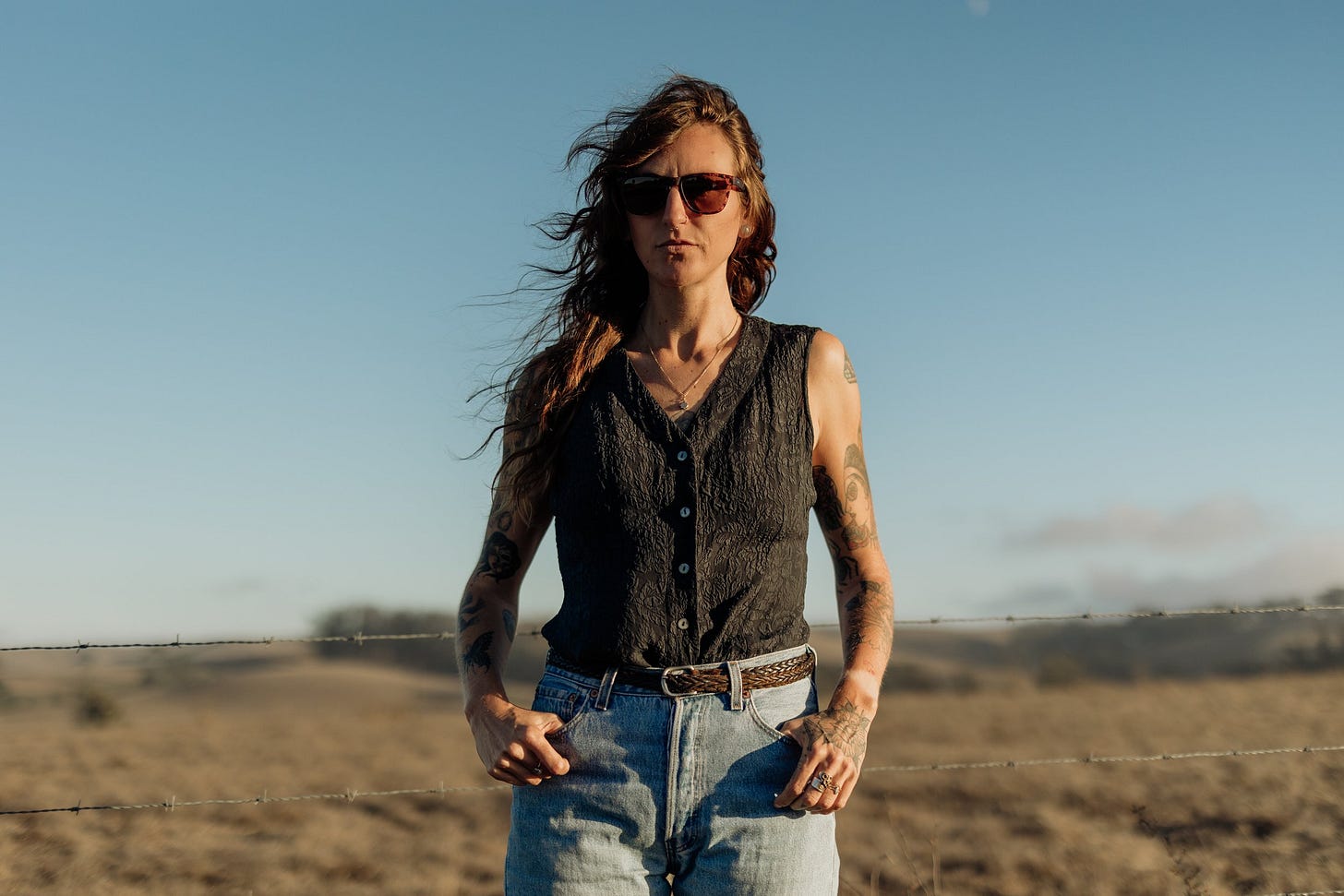Maybe I’m just trying to show you who I am: A Review of Howling Women by Shelby Hinte
A guest post from Jo Unruh
Hi friends,
For today’s post, WRJ collaborator Jo Unruh reviews Shelby Hinte’s novel, Howling Women, which was released by Leftover Books. Shelby is the Senior Editor of Write or Die Magazine and teaches writing classes at the Writing Salon and WritingWorkshops.com. She has been a reader and intern for various independent presses and magazines including ZYZZYVA, Split/Lip Press, and No Contact. She lives in Northern California.
Here’s a brief synopsis of the novel:
Sabine Haegan has spent a lifetime desperate to escape her violent past. But when her life in California falls apart, she returns to New Mexico, the state she abandoned more than a decade prior. Searching for salvation in the desert, she meets Howling Woman, a woman who has never surrendered to the brutality of men. Under the spell of the summer sun, a mysterious vortex, and the enigmatic air of Howling Woman, Sabine spirals toward the center of what has haunted her all these years, and a single act of violence unearths everything she's tried to bury. Now, out on bail and awaiting trial, Sabine feverishly attempts to set the record straight about the man she's shot and the choices she's made.
Maybe I’m just trying to show you who I am: A Review of Howling Women by Shelby Hinte
Jo Unruh
Billed as a metafictional confessional, Shelby Hinte’s debut novel, Howling Women, swirls itself straight into the center of the vortex. Surrounded by the blazing New Mexico heat, along with women’s voices drifting to the page from films and songs, Hinte reflects on the nature of stories and introduces a world as gritty as the desert sand and as sparse as a shot glass of whiskey left on an abandoned bar.
The term “vortex” could comfortably be used as the thesis word for Howling Women. It is the unseen force that draws people to the small town of Yu, New Mexico; it is the intensity that swallows the narrator and her choices. Howling Women is a book of layers — “I wondered how one woman could contain such multitudes. If I did too” (82). And it’s a book of consequences. The novel is many things, something even the story itself acknowledges, but running straight through the center is the relationship between Sabine Haegan and Howling Woman.
Sabine, the book’s narrator, spools out her story from the end of it looking back, out on bail and waiting to begin her trial for shooting a man. She’s telling the story as a confessional, although she admits it likely won’t make a difference in the court ruling. Instead, it’s an introspective account — a way to put her own voice to paper and give herself agency. Sabine is, by society’s traditional definitions, a successful woman. She left home, went to college, married a good man, lived in California. But despite physically leaving her past behind, she still carries it with her, marked in the raw places that she’s afraid to let others see.
She begins the story with her description of leaving her husband and California to return to her mother’s home in New Mexico, a state she thought she’d left for good. Sabine leaves her mother’s home after just a short time, only to have the bus that was supposed to bring her to a new life break down outside of Yu, New Mexico. The locals insist that Yu’s “vortex” brought her to the town, claiming it has a magnetic force that brings souls to the city when they need it most. Was it fate that brought Sabine to Yu, or her choices that she made? Both the novel and the narrator struggle with that question throughout the story, asking it of themselves and the reader over and over.
Sabine’s new life begins here, where secrets from the past find a way to catch up to the present. The novel has an intensity about it — the carrot-on-a-stick of wondering which man she shot, the glasses of wine and shots of Jack Daniels that punctuate Sabine’s days, the endless desire for rough sex behind closed doors. Within her first day in Yu, she meets Howling Woman, a stranger who takes her in, and together, the two women start a dangerous dance of fierce loyalty and grim justice.
Yet Howling Woman isn’t the only female voice to enter the narrative. Hinte brings in a multitude of women through song and film to create an additional whirling vortex around the story. Sabine has a wealth of movie and fiction references and uses them often. She remembers going to the movies with her mother and watching Monster, a drama about serial killer Aileen Wuornos. She thinks about Lizzie Borden while she drinks at the bar. She references Beaches, Dolores Claireborne, and Thelma and Louise. Some of these stories tap into a shared history — we all know what Lizzie Borden did and how Thelma and Louise ends. Inviting these women into the story cements another layer into this first-person account, creating a haunting echo when Sabine asks “Maybe I’m just trying to show you who I am — a desperate woman looking to escape herself. Is that so monstrous?” (35).
There are sweeter moments too — Sabine and Howling Woman making dinner together and sipping wine out of Mason jars while records spin with the voices of Gillian Welch or Lucinda Williams. And it’s during this time, the bulk of the novel, that we see the changes begin to form in Sabine. She’s a woman running from her past and unable to run toward a present. We see the choices she makes, the conversations she has. We witness the pulling away at her layers, becoming the rawer and realer version of herself, and what that means for her and the people around her:
No one knew me. Not really. Up until then, that’s what I thought I’d wanted, but now I wonder if we all long to be known. Everyone says you can’t ever truly know someone, it’s the crux of any good thriller or mystery . . . but aren’t we all trying in some way to show ourselves to someone else, little by little, until they prove trustworthy enough to see the whole? (92).
In the end, Howling Women is a story that intentionally doesn’t quite know what it is. Sabine documents her own musings on the genre towards the end of the novel, knowing it’s not a traditional story about healing trauma, or love, or female friendship. It’s a slippery, grimey sort of story, one filled with irrevocable choices and pivotal relationships. Right after Sabine’s thoughts on genre, she says:
I guess all I can do when it comes to ending this confession is bring us as close to the present moment as possible, but it’s hard not to think about what comes after this moment, hard not to imagine the end as existing in a larger context of the whole story, as coexisting with the stories of others, their own telling of it contradicting the one I’m writing (183).
And that is the true vortex of Howling Women. It’s not a strange force pulling people into the desert, or fate versus free will. It’s the compounding of stories, both true and fictional. It’s knowing that every narrative that we tell and are told are subjective, and further, a single choice means something different happens in the stories of those around us. And as we choose the narratives in our own lives, every song we hear, film we watch, and book we read becomes another thread in our own personal vortex.
Jo Unruh is a Minnesota girl living in the Windy City. Holding an MFA in Creative Writing, she has been published in various places both online and in print. She is overfond of strong cups of tea, lakes & oceans, and skies brimming with stars.
Subscribe to see more guest posts from WRJ’s amazing contributors / Paid access includes editorial feedback for 1 poem each month, Q&A with the editor, and more.








